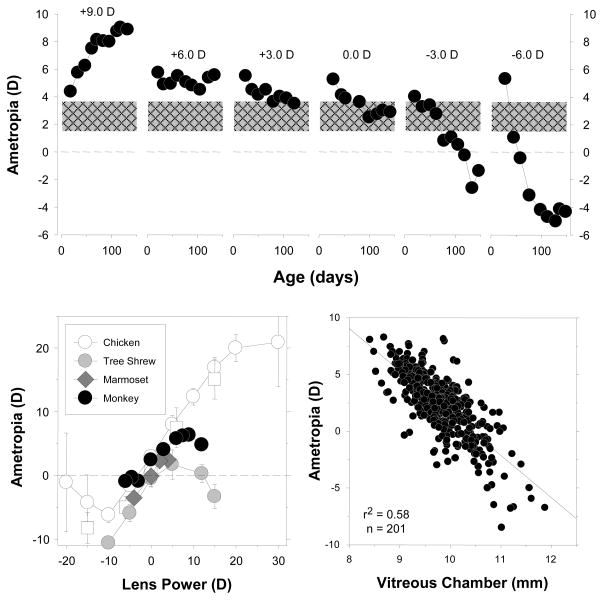Figure 2.
Results from lens compensation experiments in infant monkeys. Top. Spherical-equivalent spectacle-plane ametropias plotted as function of age for individual monkeys reared with powered spectacle lenses in front of both eyes.61 The first and last data point for each animal represent the start and end of the lens-rearing period. The powers of the treatment lenses are given in each panel. The monkey shown in the left most plot was treated with progressively increasing powers of positive lenses beginning with +4.5 D and ending with +9 D lenses. All the other monkeys wore the same powered lenses throughout the treatment period. The cross-hatched area shows the mean (± 1 SD) ametropias for normal 4- to 5-month-old infant monkeys. The bottom left plot compares the results of lens compensation experiments in different species (chickens,120, 121 tree shrews,122 marmosets,70 monkeys61). The mean ametropia obtained at the end of the lens-rearing period is plotted as a function of the power of the treatment lenses. In the bottom right panel, the ametropia obtained at the end of the lens-rearing period is plotted as a function of vitreous chamber depth for individual experimental monkeys.74

